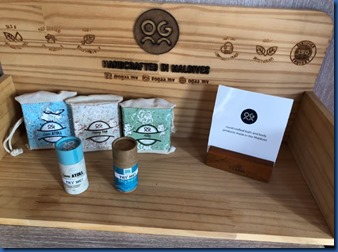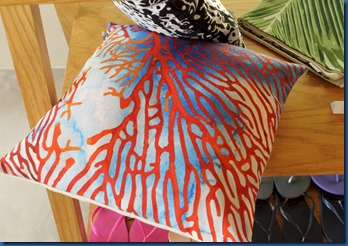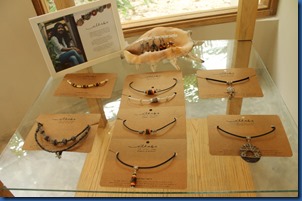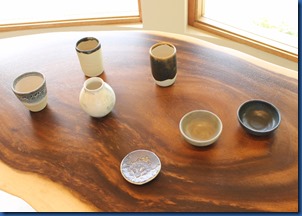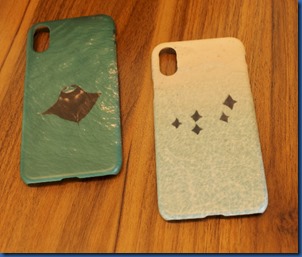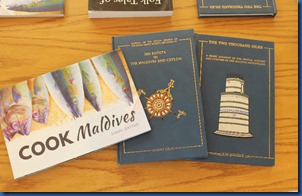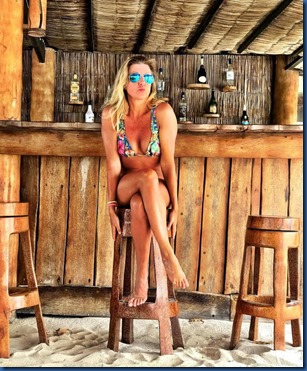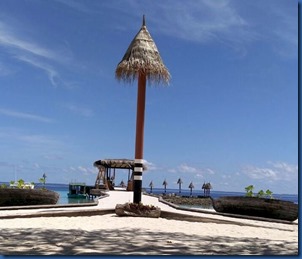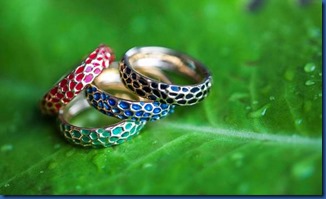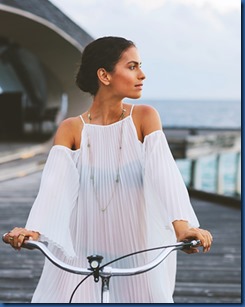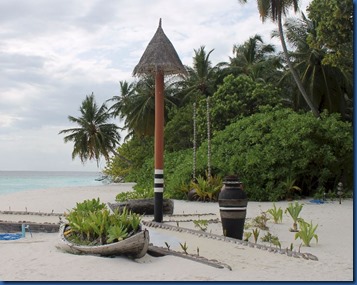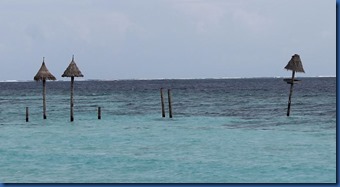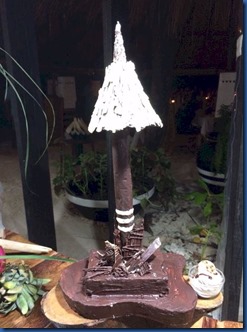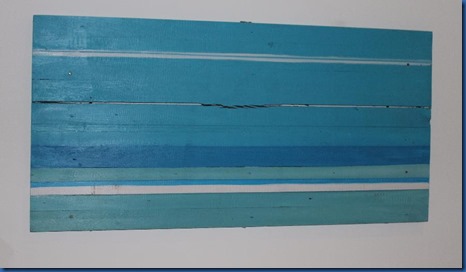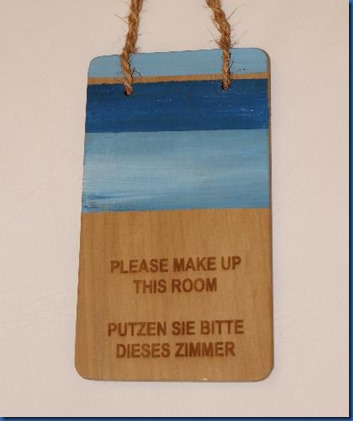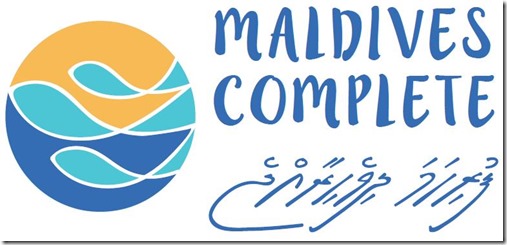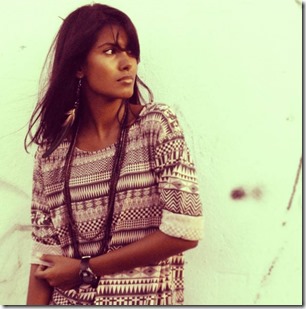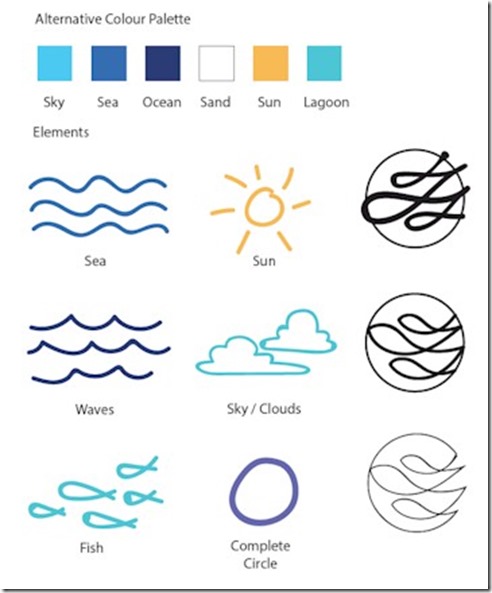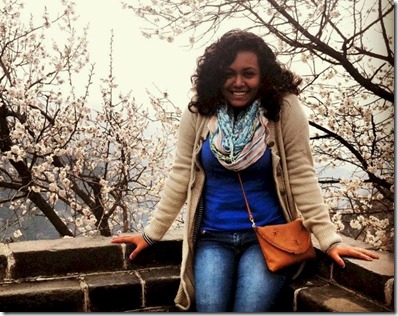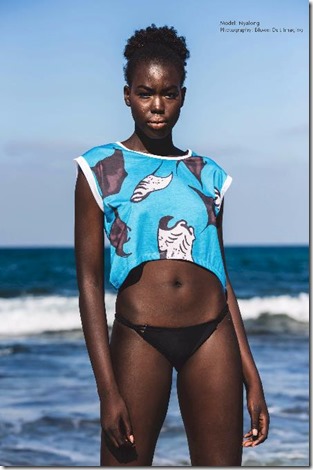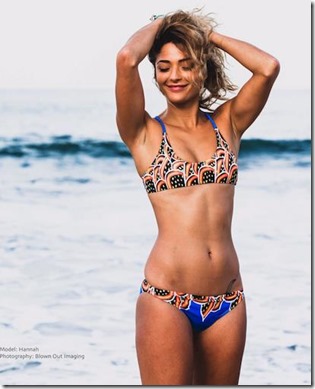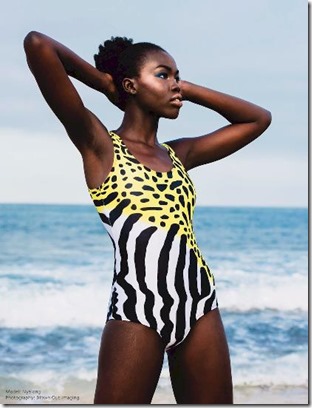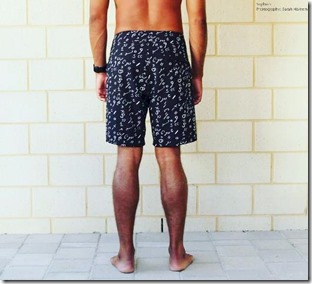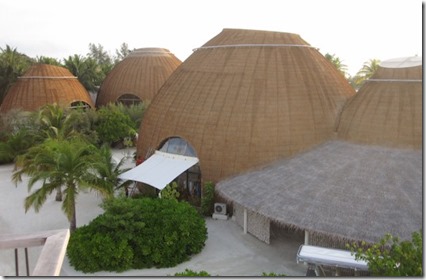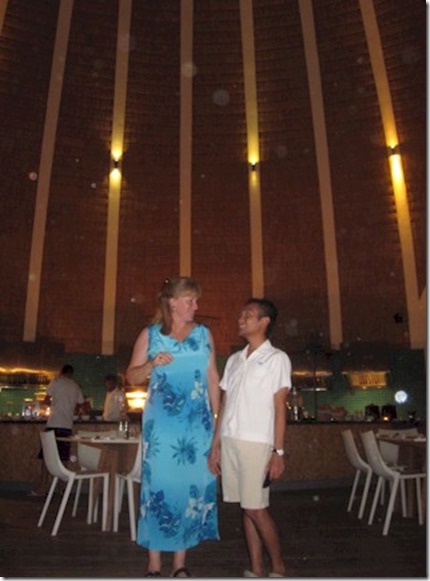Many prospective guests seek out the authentic Maldives experience when visiting and one aspect is to enjoy Maldivian products made by Maldivians themselves. Ailafushi’s spa features the Ogaa line of soaps and candles at its NU The Spa so you can not only enjoy Maldivian body care pleasures, but even take them home.
Best of the Maldives: Local Artist Boutique – Faarufushi
For low-miles “buy local” shopping, Faarufushi’s boutique is stocked with items almost entirely sourced from local artists. The miles-friendly range includes jewellery, fabrics, ceramics, and even Maldives themed phone covers. The shop also carried massage oil made from locally produced coconut oil (the same signature oil they use for the resort spa treatments). Many of the products are also featured in the rooms, spa and around the island like the Island Bazaar soft furnishings (see photo above) and the Island Apothecary hand cleanser.
Another impressive line of “local” products is one of the most extensive collections of books about the Maldives I have come across. Not just touristy coffee-table photo books, but histories and novels set in the archipelago. Beach reading about your beach!
Best of the Maldives: Homegrown – AaaVeee
People often ask about the most authentic Maldivian island. A number of resorts are inspired by Maldivian tradition and local aesthetic, but by and large the resorts are enclaves of landlubber creature comforts shipped in. In fact, even the famous water villas were a concept imported from Bali. But “Nature’s Paradise” resort, AaaVeee, is really the ultimate “Maldives paradise” for sheer indigenous authenticity. Most everything on the island was made on the island, by islanders from materials from the islands.
For example, the stools in the bar are carved from a single coconut tree trunk (see photo above). And I have already written about their distinctly traditional Maldivian “koari” throughout the island (see photo below) and even its tradition breaking local snorkel guide.
Best of the Maldives: Jewellery – Vommuli
Taking inspiration from the Maldives is a range maker of jewellery inspired by the tapestry of dappled colours both twinkling across its gentle waters, adorning the schools of tropical fish underwater, and filtering through the canopy of swaying palm trees. Ritika Ravi is part of the St. Regis Vommuli family herself and her visits there sparked her design
- “Ritika Ravi’s jewellery line gives precious stones like polki and sapphires a contemporary, sea-inspired makeover Cartier’s perennial favourite, the stackable rings, meets Gucci’s enamelled and bejewelled ones, but with an Indian aesthetic, in Ritika Ravi’s Ivar Jewellery. The inaugural collection, 10.18, is a combination of gems with white and rose gold, ‘inspired by a vacation to the Maldives’. Ravi used polki (uncut diamonds) and sapphires from Sri Lanka to mimic the crystal clear waters and the many shades of blue of the sea surrounding the tropical island… While she largely retails online, her only brick-and-mortar store is, quite fittingly, at her family-owned The St Regis Maldives Vommuli Resort.”
Prices range from $300 – $400 and can be bought at her online shop at Ivar Jewellery.
This latest example of “Maldives Inspired Design” has in turn inspired me to add a tag for it.
Best of the Maldives: Koari – AaaVeee
One resort that is always dressed in traditional Maldivian garb is AaaVeee. The entire resort is not just inspired by local Maldivian design, but most of the infrastructure was produced in the Maldives itself. In fact, a good number of things like chairs and tables were made on the island by Maldivians using materials from the island itself.
Perhaps the most “Maldivian” aspect is the ubiquitous “koari” adornments. “Koari” means “cone” and is a traditional form of decoration found on the islands. It is a cone made out of palm thatch placed atop a tall pole. I’ve already posted about the koari used to mark the navigation channel to the resort, but it is also used at the reception jetty (see above), in the lagoon (directly below) and various other places across the island. The resort’s chef even baked a “Koari Kake” (below).
Best of the Maldives: Room Abstract Paintings – Summer Island
I’ve always wondered why the Maldives resorts didn’t use more Maldivian artists for room décor. I’ve come across so many impressive talents in my decades of Maldives visits. Their renditions of the Maldivian vignettes are as personal as they are authentic. But my favourite of all resort artwork are the commissioned room paintings for the Summer Island resort revamp.
When I entered my the first room on my resort tour this July, I was stunned by the abstract painting over the bed (see below). It had captured the paradise parfait of colour that define the vistas from any point on any island. White sand, turquoise lagoon, azure ocean, green island, robin’s egg blue sky. This distinctive striation inspired my own graphic design in the header to this blog (see top of page). Also, you can see it in the header picture of the Maldives Complete Facebook page.
Every room has its own unique piece. And the “Do Not Disturb” signs for the door were similar crafted. All the work was done by an in house artist.
Mastery in the master bedrooms.
Maldives Complete Logo 2.0
The Maldives keeps developing and getting better and so, we hope, does Maldives Complete. The latest refinement injects an extra bit of authentic Maldivian style and flair to the site with the contributions of up-and-coming artist Aima Musthafa (see photo below) who has redesigned its logo and design palette.
I’ve admired Aima’s work since I first discovered her in the “Cool Women” piece. I’m honoured to have been her very first customer and proud owner of her triptych “Raalhu Girl” (“Raalu” means “wave” in Dhivehi). After going abroad for some art and design studies, she has returned to her home shores to ply her creative brush and was recently was showcased in Kandima’s artist collective.
The Maldives Complete brief was to infuse the look with colour and culture of the Maldives it represented. I wanted to add the Dhivehi words for “Maldives Complete – “Furihama Dhivehi Raajje”. So Aima selected a font that would work well in both languages capturing the dynamic fluidity of the Dhivehi characters.
Part of what drives to me to this hobby is the escapism of immersing myself into the Laccadive world even though I am hunkered down five thousand miles away in damp, chilly England. I’ve always crafted the site to be saturated with local imagery so using it would be like a digital visit to this paradise. I have always used a collection of colours that evokes the vibrant tropical and aquatic tapestry of the destination. Aima formalised this palette some colours more carefully aligned in tone and complementarity (see her notes below). She then blended the native colours into a design similarly melding familiar shapes and forms. The result is a striking new emblem for all complete Maldives appreciation.
The new logo has also been an opportunity for a general cosmetic tidy-up to the site as I had to touch so may main pages. I have aligned some of the graphical elements more precisely and used Aima’s colour palette in place across the pages.
ޝުކުރިއްޔާ އައިމާ
Best of the Maldives: Maldivian Fashion Design – Kandolhu
Who puts the “fun” into “Funoas”? Kandolhu has introduced the “Funoas” range of swimwear which you can buy at the resort. Her designs based on the distinctive and colourful sea life of the Maldives are truly inspired. We caught up the Maldivian born Funoas designer Sumii Haleem for her first exclusive interview:
Q: Where are you from in the Maldives?
A: I was born and raised in Male’, Maldives. My mother is from Henveiru district and my father is from Maafannu district.
Q: Where are you living now?
A: I am currently living in Perth, Australia.
Q: What brought you there?
A: Education brought me here to Perth. Back then, when I finished high school, there were no universities in Maldives. Anyone who wanted to get a tertiary level education, had to go overseas. So my parents decided to move to Australia so my little sister and I could have a chance at a quality education. Ever since then I have been moving back and forth between Maldives and Australia.
Q: What inspired your career in art?
A: I have always been fascinated by nature and science and have always used art as a way of expressing this fascination. I also grew up around my aunt who was a seamstress. So it was a combination of curiosity and exposure to designing clothes, that started my career in art.
Q: What was the first piece you sold?
A: The first piece of artwork that I ever sold was in 2012, an abstract ink on paper drawing called “The City Never Sleeps”. It was on Society6 that I sold this print. I felt ecstatic, that someone had actually bought my artwork!
Q: How did you move into fashion?
A: Initially, I started printing my artwork on t-shirts, mugs, laptop and phone covers on Society6. I got a lot of positive response from friends and with their encouragement decided to start my own clothing line. At the time I started working on Funoas, I had also just started scuba diving and was blown away by the beauty and the vulnerability of our coral reefs. I wanted my brand to be an environmentally conscious one, so I could use clothing and fashion to create awareness about issues faced by Maldives, such as climate change, global warming and sea level rise.
Q: What’s your biggest selling item?
A: My best selling item is the Thaana printed clothes. Thaana is the unique writing system of Maldivian language, Dhivehi. I created this piece because I thought Dhivehi is a unique language spoken by a minority of world’s people and the scripture is also visually so unique and eye catching. So I think this print is very sentimental to Maldivians, especially those that live away from home, like myself.
Q: Who are your favourite designers?
A: My art is influenced by people from different walks of life, nature and scientific concepts so it is difficult to narrow it down to only designers. Some of the people that influence my work include Ashish Gupta, Adam Manik, Hassan Manik, Aishath Shafeeg, Moosa Mamdhuh, Ahmed Shafeeg, Maya Arulpragasam, Karl Lagerfeld, Frida Kahlo, Salvador Dali, Nicola Tesla, David Attenborough,Fibonacci, Neil Degrassi Tyson, Scuba divers and all underwater photographers, just to name a few.
Q: If someone gave you $1 million to invest in your business, what would you invest it in?
A: If I had a million dollars I would invest it on building Funoas to become an internationally recognised brand that creates quality clothing, 100% ethically and eco-consciously. I would concentrate on creating our products solely from recycled polyester, which is something I am currently looking into for my future collections. Once Funoas is a well established clothing brand, I would love to be able to work with local Maldivian environmentalists, marine researchers and climate change advocates to study more about our own marine ecosystems and bring a positive change to Maldives’ growing environmental crises. I believe this is a social responsibility.
Best of the Maldives: Nature Inspired Architecture – Kandooma
Magic coconuts in the Maldives news this week: “Police summon white magic practitioner to investigate possible cursed coconut” meant to influence yesterday’s long awaited elections. Everything seemed to go smoothly and peacefully which hopefully paves the way for the people’s voice to settle all of the political controversy of the past year and a half.
For some real coconut magic, though, Kandooma architecture is nuciferally inspired reassembling coconut husks.
These dramatic structures aren’t the only soaring design features of the resort which takes extensive advantage of vertical space with not just these massive vaulted ceilings (see photo below), but also tented canopies, a dramatic reception area and a unique tower even.

